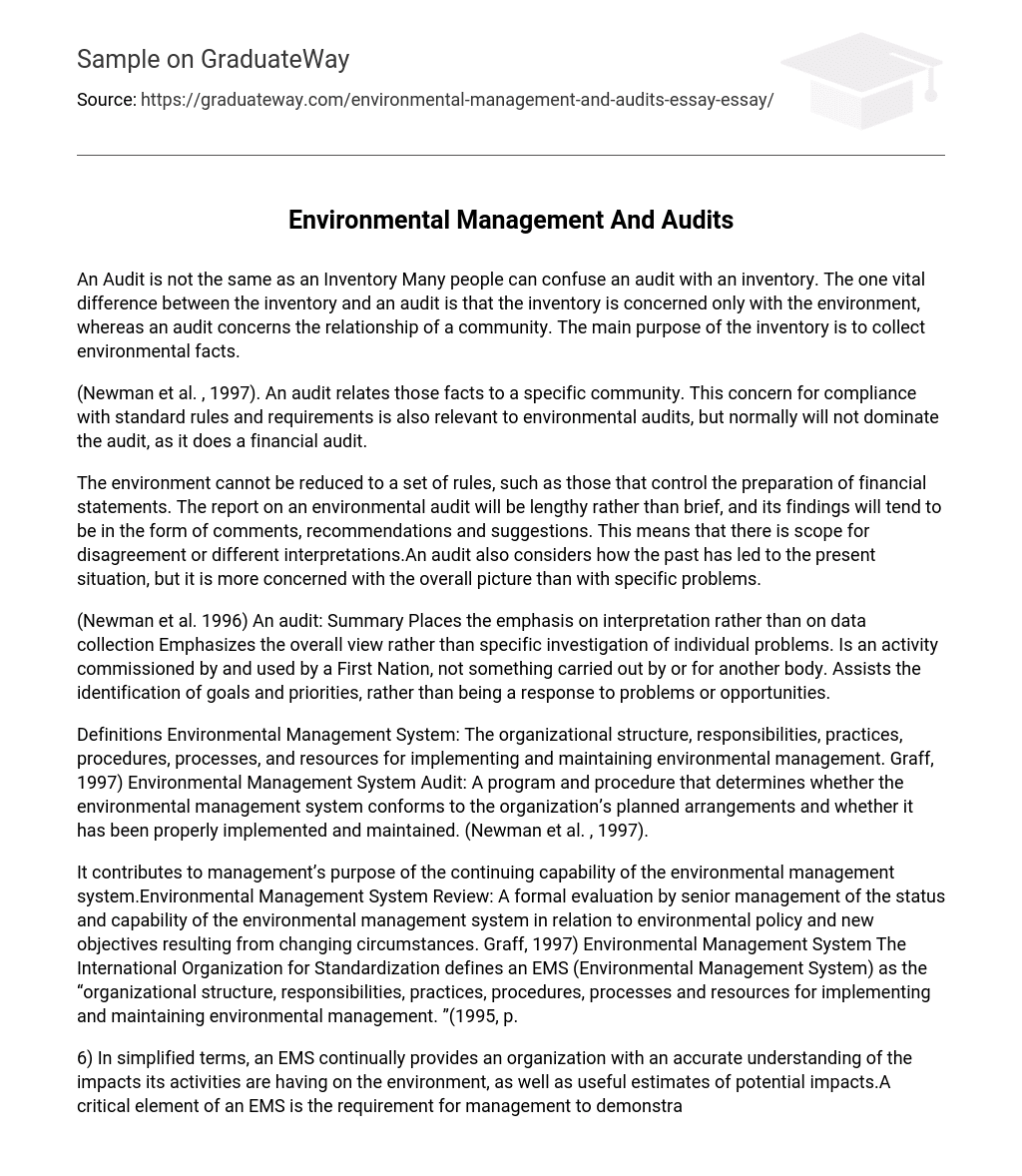An audit and an inventory are often mistaken for each other, but they differ significantly in focus. While an inventory solely focuses on the environment, an audit encompasses the relationship of a community. The primary objective of an inventory is to gather environmental facts.
According to Newman et al. (1997), audits involve relating facts to a specific community. While compliance with standard rules and requirements is important in environmental audits, it typically takes a backseat when compared to financial audits.
The environment cannot be simplified into a set of regulations, like the ones governing financial statement preparation. An environmental audit report will be detailed rather than concise, and its discoveries will typically be presented as comments, recommendations, and suggestions. As a result, there is room for differing opinions or varying interpretations. An audit also evaluates how past events have contributed to the current state of affairs, but it focuses more on the bigger picture rather than specific issues.
(Newman et al. 1996) An audit: Summary Places the emphasis on interpretation rather than on data collection Emphasizes the overall view rather than specific investigation of individual problems. Is an activity commissioned by and used by a First Nation, not something carried out by or for another body. Assists the identification of goals and priorities, rather than being a response to problems or opportunities.
The Environmental Management System (EMS) is the overall framework for implementing and maintaining environmental management within an organization. It encompasses the organizational structure, responsibilities, practices, procedures, processes, and resources. According to Graff (1997), an Environmental Management System Audit is a program and procedure used to evaluate whether the EMS aligns with the organization’s planned arrangements and if it has been effectively implemented and maintained. Newman et al. (1997) also define the Environmental Management System Audit in a similar manner.
It contributes to management’s purpose of the continuing capability of the environmental management system. Environmental Management System Review is a formal evaluation by senior management of the status and capability of the environmental management system in relation to environmental policy and new objectives resulting from changing circumstances (Graff, 1997). The International Organization for Standardization defines an EMS (Environmental Management System) as the “organizational structure, responsibilities, practices, procedures, processes and resources for implementing and maintaining environmental management” (1995, p.).
Simply put, an EMS constantly gives an organization a clear understanding of the environmental effects caused by its activities and estimates of possible effects. A crucial aspect of an EMS is the need for management to show a dedication to ongoing improvement by regularly auditing, reviewing, and modifying its EMS (Graff, 1997). As implied by the term “system,” an EMS implies a continuous cycle. This cycle commences with the creation of an environmental policy.
The policy needs to be implemented and applied throughout the entire organization. The company should announce its environmental goals and identify those that have a notable effect on the environment. These goals are essential for the company’s environmental efforts, guiding them towards specific targets and objectives in accordance with the overall environmental policy.
The EMS, which was defined by the International Organization for Standardization (ISO) in 1995, is accountable for creating procedures, guidelines, and actions to execute the policy and accomplish objectives. Effective communication is crucial in helping individuals within the organization understand their responsibilities and comprehend environmental goals.
Environmental management is centered on the responsible utilization of natural, economic, and human resources to safeguard and improve the environment. By empowering individuals with this knowledge, they can actively contribute to the effectiveness of the EMS. This involves protecting important ecological assets, efficiently managing local areas, and fostering a positive connection between people and their surroundings.
According to (Daly, 1993), the goal of modern environmental management is to establish stewardship of the environment for both present and future generations, in accordance with the principles of sustainable development.





